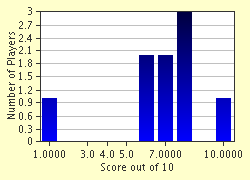Quiz Answer Key and Fun Facts
1. The BSA Company was founded in 1861 in the Gun Quarter of which district of Birmingham, England?
2. Launched in 1932, which machine might be found on the Herzsprung-Russell diagram?
3. Which BSA model carried a name celebrating a historic British endeavour?
4. In competition, this motorcycle would win the medal for first place, eventually becoming BSA's 'signature' model.
5. The name of which model would be appropriate had Werner von Braun ever worked at BSA?
6. Had they been available at the time, which motorcycle might Castor and Pollux have enjoyed riding?
7. Which BSA motorcycle proved popular in the US market, despite the name it was sold under?
8. Which BSA motorcycle might be described as being out of this world?
9. Which BSA machine shares its name with any one of several comic characters?
10. In any alternative universe, with which machine might Kirk, Spock, Bones and Scotty have been issued?
Source: Author
SisterSeagull
This quiz was reviewed by FunTrivia editor
stedman before going online.
Any errors found in FunTrivia content are routinely corrected through our feedback system.

